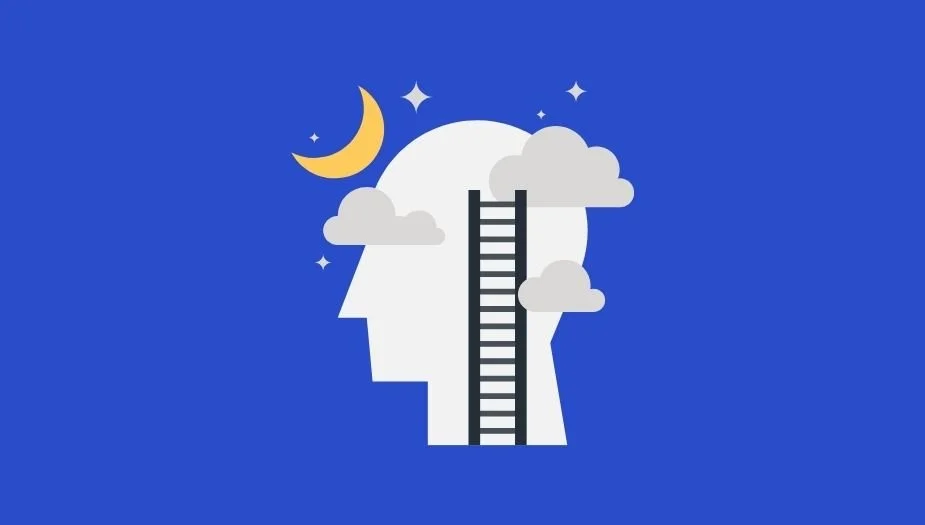5-Step Practical Evening Routine for Better Sleep When You're Stressed and Burnt Out
You deserve better than waking up in chaos.
Stress and burnout can make even the simplest tasks feel overwhelming, and when you're constantly running on empty, your evenings might look like a chaotic mix of unfinished chores, doom scrolling, and collapsing into bed far too late. The result? Mornings that start with frustration and exhaustion.
If you’re tired of waking up feeling like you’re already behind, it's time to take back control of your evenings. This five-step routine is practical, realistic, and designed for busy professionals who need structure without adding more stress to their plate. Follow these steps to reset your nights, reduce overwhelm, and set yourself up for success every single day.
Step 1: Decide Your Bedtime and Commit to It
If you’re serious about reducing stress and feeling better, you need to prioritize sleep. It’s non-negotiable. Chronic stress and burnout are often fueled by sleep deprivation, making it harder to regulate emotions, focus, and even make basic decisions.
How to Set Your Bedtime:
Figure out what time you need to wake up. Work backwards from your morning obligations.
Determine how many hours of sleep you actually need. Most adults function best on 7–9 hours.
Set your “asleep by” time based on that number.
Add a 30-minute buffer. This accounts for the time it takes to unwind and actually fall asleep.
For example, if you need to be up by 6:30 AM and you function best on 8 hours of sleep, you should aim to be asleep by 10:30 PM. With a 30-minute buffer, that means you need to start winding down at 10:00 PM. Treat this bedtime like a work deadline—because your well-being depends on it.
Step 2: Closing Shift – Reset Your Space
Think of your home like a restaurant. Before the staff leaves for the night, they don’t just walk out. They do a closing shift: clean up, reset the space, and prep for the next day. This same concept applies to your home.
How to Do a 10-Minute Closing Shift:
Kitchen: Wash dishes, wipe down counters, and make sure the sink is empty. Waking up to a clean kitchen instantly reduces morning stress.
Living room and workspaces: Take five minutes to do a quick walk-through. Put away anything left out—blankets, mail, clutter—so you’re not waking up to a mess.
Bedroom and bathroom: Make sure clothes are put away, surfaces are clear, and everything is set up for a calm morning.
This simple act prevents you from starting your day already overwhelmed by yesterday’s mess.
Step 3: Make Tomorrow Easier in 5 Minutes
Mornings are hard enough when you're burnt out—don’t make them worse by scrambling around in chaos. Instead, spend five minutes at night setting up your morning for success.
What to Prep:
Workout gear: If you work out in the morning, lay out your clothes the night before. No thinking required.
Morning essentials: Set up your coffee pot, fill a water bottle, and place it near your coffee machine as a reminder to hydrate first thing.
To-do list and schedule: Take a quick look at your calendar and write down the top three things you need to accomplish tomorrow. When you wake up, you’ll already know what’s coming.
Bags, lunches, or work essentials: If you take anything with you in the morning, pack it up now.
By taking care of these small tasks at night, you eliminate unnecessary stress in the morning.
Step 4: Take 20 Minutes for Yourself
You can’t pour from an empty cup. Even when life is chaotic, you need dedicated time for yourself. This doesn’t have to be an elaborate self-care ritual—just 20 minutes of something that makes you feel better.
Ideas for a Quick Nightly Wellness Routine:
A short stretching or yoga session to release tension.
Reading a book (not on a screen) to help unwind.
A warm shower or bath to relax your muscles.
Meditation, breathwork, or journaling to clear your mind.
Listening to calming music or a podcast.
No matter how packed your schedule is, you can find 20 minutes. Prioritizing yourself isn’t selfish—it’s necessary.
Step 5: Dock Your Devices Before Bed
One of the biggest sleep killers? Your phone. The blue light from screens disrupts melatonin production, making it harder to fall asleep. Not to mention, the endless scroll of emails and social media can spike stress levels right before bed.
How to Set a Screen Boundary:
Charge your phone across the room or in another room. This prevents late-night scrolling and makes getting up in the morning easier if you use your phone as an alarm.
Set a “phone curfew.” Choose a time when you’ll stop checking emails and social media (at least 30–60 minutes before bed).
Use a real alarm clock. If you rely on your phone, switch to an old-school alarm to avoid temptation.
Enable “Do Not Disturb” mode. Stop notifications from disrupting your wind-down time.
By docking your devices before bed, you create a boundary between your day and your sleep, allowing your brain to actually relax.
Final Thoughts
If you’re stressed and burnt out, the last thing you need is a complicated evening routine that feels like another chore. This five-step routine is simple, effective, and most importantly—realistic for busy professionals.
By committing to a set bedtime, resetting your space, prepping for the next day, taking time for yourself, and creating a screen-free buffer, you’ll wake up feeling more in control instead of constantly playing catch-up.
Stress and burnout don’t just disappear overnight, but small, consistent changes can make a massive impact. Start with one or two steps, build momentum, and watch how these simple shifts transform your nights—and your mornings.
Because you deserve better than waking up in chaos. It’s time to get it together—one evening at a time.
Need Help? You’ve optimized your work—now it’s time to optimize your rest.
Sleep isn’t a break from performance. It drives it.
💡 Let’s build a sleep routine that works for your brain and your calendar. Book your free 20-minute consult today.
Article References
The sources cited in the article:
National Institutes of Health (NIH). "How Sleep Works - How Much Sleep Is Enough?" NIH - How Sleep Works
National Sleep Foundation (NSF). “Setting a Regular Sleep Schedule.” NSF - Setting a Regular Sleep Schedule
Sleep Foundation. "How to Build a Better Bedtime Routine for Adults." Sleep Foundation - Build a Better Bedtime Routine
American Health Association (AHA). "How to Sleep Better with a Bedtime Routine.” AHA - Sleep Better with a Bedtime Routine
Harvard Medical School. “How Much Sleep Do You Actually Need?” Harvard - How Much Sleep Do You Actually Need?
Centers for Disease Control (CDC). “About Sleep.” CDC - About Sleep
Sleep Foundation. “How to Fix Your Sleep Schedule.” Sleep Foundation - How to Fix Your Sleep Schedule






